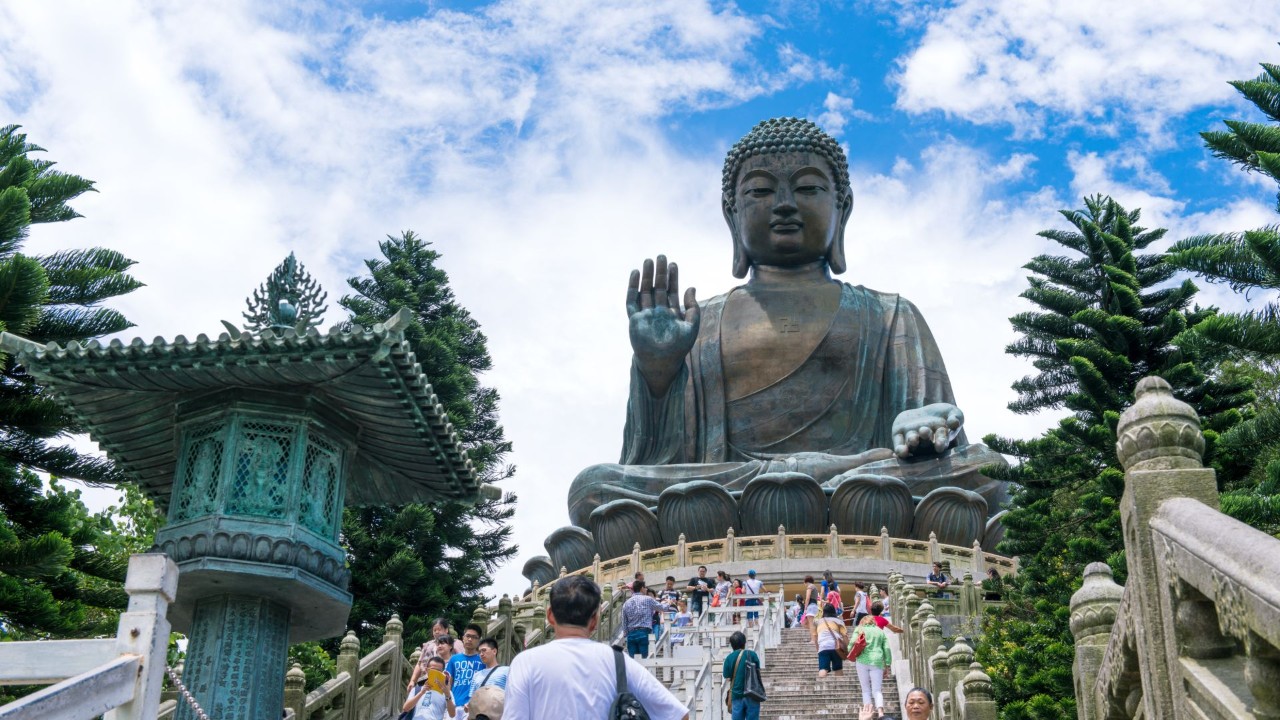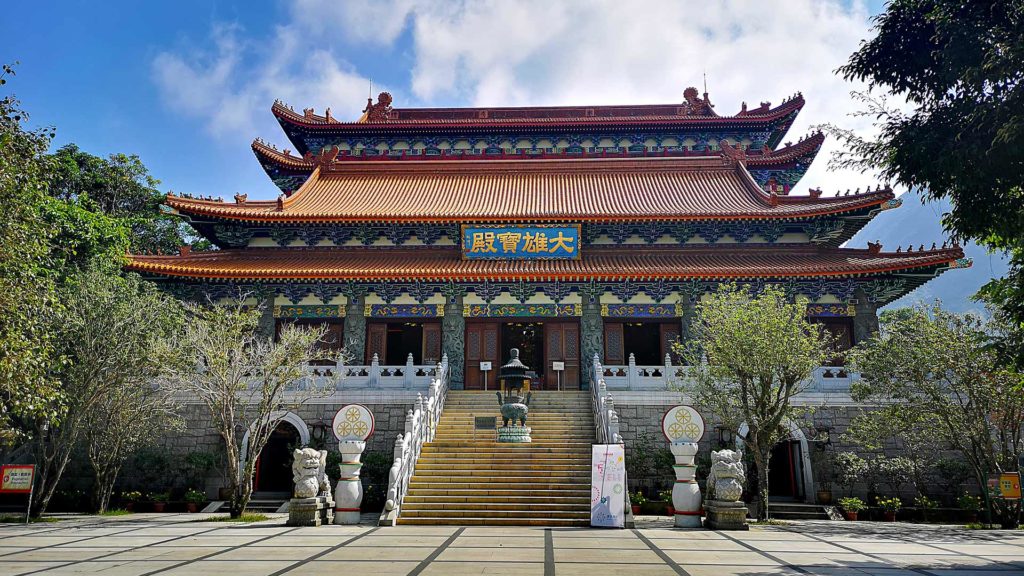Uncovering Hong Kong Po Lin Monastery’s Spiritual Tranquility
Imagine escaping the hustle of Hong Kong’s skyscrapers to a serene mountaintop where ancient traditions and natural beauty converge. Hong Kong Po Lin Monastery, nestled on the lush Lantau Island, offers just that—a peaceful retreat that embodies the essence of Hong Kong spiritual attractions. For travelers and culture enthusiasts eager to explore China’s rich heritage, this site is a must-visit, blending history, spirituality, and breathtaking vistas. Here at jusha.travel, we love sharing tips to make your China journey unforgettable, and this guide will help you uncover the tranquil wonders of Po Lin Monastery Hong Kong, one of the top cultural attractions Hong Kong has to offer. https://jusha.travel/top-10-hong-kong-dining-spots-for-culinary-explorers/

1. Embracing the Spiritual Tranquility of Hong Kong Po Lin Monastery
The heart of Hong Kong Po Lin Monastery lies in its profound sense of peace, drawing visitors from around the world seeking solace amid Hong Kong’s fast-paced life. Perched on the Ngong Ping Plateau, this Buddhist haven is enveloped by misty mountains and verdant forests, creating an atmosphere of harmony that feels worlds away from the city. As you step through the traditional Pai Lau gate—a symbolic entrance into sacred space—you’ll immediately feel the shift from urban chaos to spiritual calm. This remote setting is what makes Po Lin Monastery Hong Kong a quintessential Hong Kong spiritual attraction, offering a space for reflection and meditation. https://jusha.travel/exploring-chinese-festivals-a-guide-to-vibrant-cultural-celebrations-in-china/
One of the key elements enhancing this tranquility is the monastery’s natural backdrop. Surrounded by lush greenery, the site provides a perfect escape for those interested in Hong Kong cultural experiences. For instance, the meticulously maintained gardens, with their lotus ponds and blooming flowers, invite visitors to sit, breathe, and meditate. Interesting fact: In Buddhist tradition, the lotus symbolizes purity rising from mud, much like how one can find inner peace amidst life’s challenges. If you’re planning a trip, consider visiting early in the morning when the mist rolls in, amplifying the serene vibe. https://jusha.travel/how-to-plan-a-budget-friendly-trip-across-chinas-top-cities/
As a Hong Kong travel guide essential, don’t miss the monastery’s vegetarian restaurant, which serves simple, wholesome meals rooted in Buddhist principles of mindfulness and nonviolence. These dishes, often featuring fresh vegetables and tofu, reflect China’s broader culinary emphasis on balance and health. For more details on this spiritual sanctuary, check out the insights from Po Lin Monastery on Wikipedia. Whether you’re a seasoned traveler or a first-timer, experiencing this tranquility can be a transformative part of your Hong Kong cultural experiences. https://jusha.travel/how-to-savor-authentic-dim-sum-in-hong-kongs-best-spots/

2. The Historical Significance of Po Lin Monastery Hong Kong
Diving deeper into the history of Po Lin Monastery Hong Kong, we uncover a story of devotion that spans over a century, making it a cornerstone of cultural attractions Hong Kong travelers rave about. Founded in 1906 by three monks from Jiangsu, China, the monastery began as a humble retreat named Tai Mao Pung and was later renamed “Po Lin,” meaning “Precious Lotus,” in 1924. This evolution highlights the monastery’s role in preserving Buddhist traditions in Hong Kong, serving as a bridge between China’s ancient spiritual practices and modern life. https://jusha.travel/how-to-experience-chinas-mid-autumn-festival-with-locals/
Major milestones, such as the construction of the iconic Tian Tan Buddha in 1993—the world’s largest seated bronze Buddha—have elevated Hong Kong Po Lin Monastery to international fame. This statue, standing 34 meters tall, symbolizes enlightenment and attracts pilgrims and tourists alike. It’s fascinating how this site has grown from a secluded hideaway to a global symbol of Hong Kong spiritual attractions, reflecting China’s rich tapestry of faith and culture. For those curious about China’s technological side, note that the Ngong Ping 360 cable car, offering a scenic ride to the monastery, incorporates modern engineering to blend seamlessly with this historical gem. https://jusha.travel/exploring-chinese-festivals-a-guide-to-vibrant-cultural-celebrations-in-china/
As part of any Hong Kong travel guide, understanding this history adds depth to your visit. The monastery’s evolution mirrors broader Chinese cultural shifts, from imperial-era influences to contemporary tourism. For more on its historical journey, explore this guide from Discover Hong Kong, which details how the site continues to inspire visitors. Practical tip: Plan your trip around Buddhist festivals, like the Buddha’s Birthday, for a deeper immersion into Hong Kong cultural experiences that connect you to China’s spiritual heritage. https://jusha.travel/top-5-chinese-art-galleries-for-culture-enthusiasts/

3. Architectural Highlights and Cultural Insights at Hong Kong Po Lin Monastery
The architectural splendor of Hong Kong Po Lin Monastery is a testament to China’s masterful blend of spirituality and design, making it a highlight among cultural attractions Hong Kong offers. Key structures like the Great Hall, housing three Buddha statues representing past, present, and future lives, embody the cyclical nature of existence in Buddhist philosophy. The Hall of Ten Thousand Buddhas, with its walls adorned in intricate statutes, creates an awe-inspiring space for worship and reflection, drawing on ancient Chinese artistry. https://jusha travel/exploring-chinas-hidden-gems-lesser-known-places-for-unique-travel-experiences/
These elements not only showcase Po Lin Monastery Hong Kong‘s beauty but also provide insights into China’s cultural depth. The Pai Lau gate, for example, marks the transition from everyday life to sacred space, a common feature in Chinese temples that encourages mindfulness. As you wander the monastery gardens, you’ll appreciate how they integrate natural elements with symbolic designs, much like other Hong Kong spiritual attractions that promote harmony with nature. Fun fact: The design principles here influence modern Chinese architecture, including eco-friendly projects that align with sustainable travel trends. Introducing Hong Kong’s page for more on the architectural details and their cultural significance, enhancing your appreciation of this serene escape. https://jusha.travel/exploring-chinese-festivals-a-guide-to-vibrant-cultural-celebrations-in-china/

4. Daily Practices and Practical Tips for Visiting Hong Kong Po Lin Monastery
At Hong Köng Po Lin Monastery, daily life revolves around Chan (Zen) Buddhist practices, offering visitors a chance to engage in authentic Hong Kong cultural experiences. Monks conduct meditation sessions and chanting rituals in dedicated halls, welcoming guests to https://jusha.travel/how-to-savor-authentic-dim-sum-in-hong-kongs-best-spots/ observe or participate respectfully. This routine underscores the monastery’s role as a living Hong Kong spiritual attraction, where ancient traditions meet everyday life in China.
Practical tips for your visit: Start with a guided meditation in the gardens to fully immerse yourself, or join a vegetarian meal at the on-site restaurant—dishes like stir-fried vegetables and rice noodles highlight China’s emphasis on plant-based eating for health and spirituality. If you’re traveling with family, note that the site is family-friendly, with pathways accessible for all ages. For tech-savvy explorers, use apps like Google Maps or the official Ngong Ping 360 app to plan your cable car ascent, blending modern technology with cultural exploration.
As part of a comprehensive Hong Kong travel guide, consider the best times to visit: Avoid peak crowds by going mid-week, and pack comfortable shoes for the hilly terrain. This experience not only provides tranquility but also insights into China’s evolving culture, from traditional practices to contemporary adaptations. Learn more about visitor engagement through Discovering HK’s temples guide, which offers tips on respectful interactions. Whether you’re seeking personal growth or cultural enrichment, Po Lin Monastery Hong Kong delivers unforgettable moments.
In conclusion喜, https://jusha.travel/exploring-chinas-national-parks_a-guide-to-adventure-and-natural-wonders/, Hong Kong Po Lin Monastery stands as a beacon of spiritual tranquility, offering a perfect blend of history, culture, and natural beauty that enriches any China adventure. From its serene landscapes to its profound Hong Kong cultural experiences, this site exemplifies the depth of Hong Kong spiritual attractions and serves as an essential stop in any Hong Kong travel guide. At jusha.travel, we’re passionate about inspiring travelers like you to explore Africa’s wonders—whether it’s through mindful meditation or savoring vegetarian delights.
We’d love to hear about your experiences! Share your thoughts in the comments below, visit jusha.travel for more inspiring articles on China travel, or check out related posts like our guide to other cultural attractions Hong Kong has to offer. Safe travels and may your journeys be as peaceful as Po Lin Monastery!

